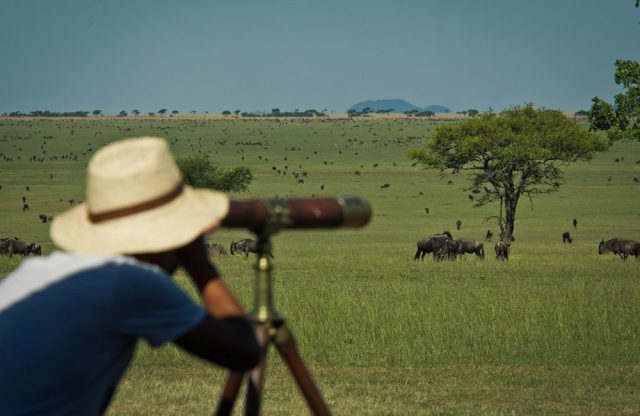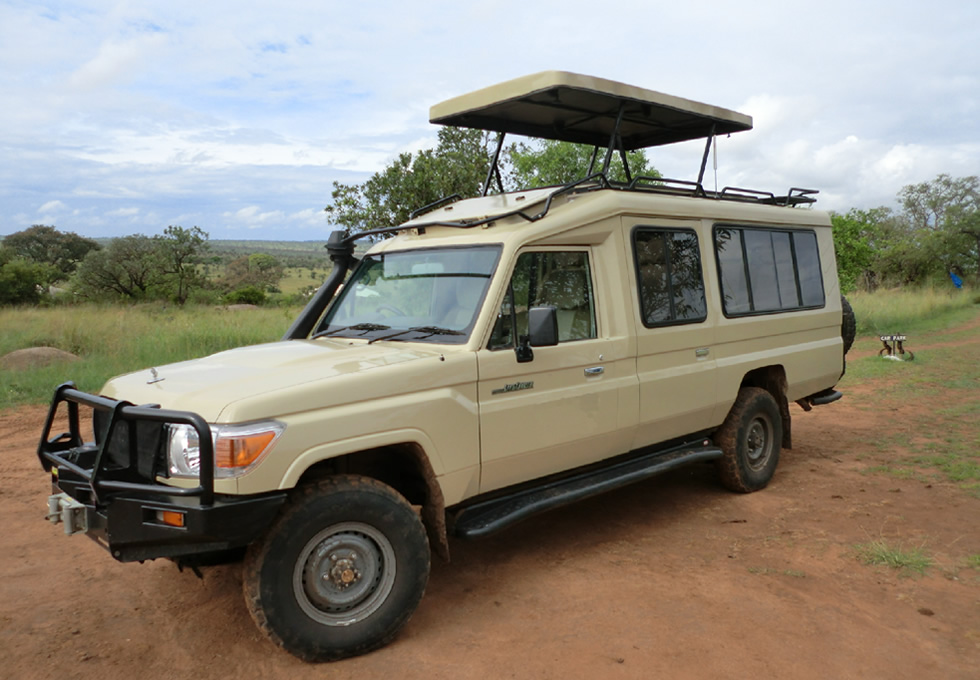Bring Binoculars on Safari. Period
As a trip leader, I never get to use my own binoculars. I always encourage clients to beg, borrow or steal decent binoculars before they come to Africa, but nobody really believes me until they get here. Then I loan them mine and I don’t see them again until the end of the trip.
I think part of the problem is that so few of us have ever used good binoculars. We are used to cheap ones that don’t really focus, and that force us to squint to see through the pin-hole eye lenses. After twenty minutes of use, we have a splitting headache and never want to use binoculars again.
Good binoculars make a safari far more personal and intimate. They bring the animals closer, allow you to tell the difference between a goliath heron and a purple heron, and let you closely watch action between animals without getting so close that you chase them away.
How to Choose Binoculars:
- Quality. Plan to spend at least $100. You are already spending thousands to come here – why not drop another $150 to make sure you have a truly amazing experience? Serious birders often spend over $1,000 on a pair of binoculars. You don’t need to do that, but it gives you a sense of the range that is out there.
- Magnification. Bigger is not always better. You will see two numbers when you are shopping for binoculars: 7×42, 8×42, 10×50, etc. The first number is magnification, or how many times closer the animal will appear to you. The second number is the diameter of the bigger lens at the end of the binoculars. It is very difficult to keep binoculars steady if the magnification is over 10x. 7x or 8x is best for most people.
- Light. The second number is the diameter of the big lens. This corresponds to how much light gets in and, therefore, how well you will be able to see whatever you are looking at. This is particularly important if you are looking for birds or chimpanzees under the forest canopy. In general, look for binoculars where the first number divides into the second number at least 5 times.
- Big eyepiece lenses. I’m talking about the small lenses where you put your eyes. The bigger these are, the easier it is for your eyes to look through the binoculars for long periods of time. If you are testing a pair of binoculars and feel like you have to squint to look through them, choose a different pair.
- Weight. I’m kinda weird here. I love a heavy, solid-feeling pair of binoculars, so I don’t mind that my binoculars weigh almost 2 pounds. For many people, though, lighter is better since their arms and shoulders get tired holding them up to their eyes for a long time. Ideally, you will go to a store and try many pairs before you choose one to buy, so you will get the “feel” before you drop your hard-earned cash.
Another important step to having a good relationship with your binoculars is learning to focus them properly. Many people are surprised to find that there are two places to focus binoculars. Follow this link to find a good tutorial on how to focus binoculars.
In short, get the best pair you can afford. You won’t regret it, and good binoculars will last for years.





